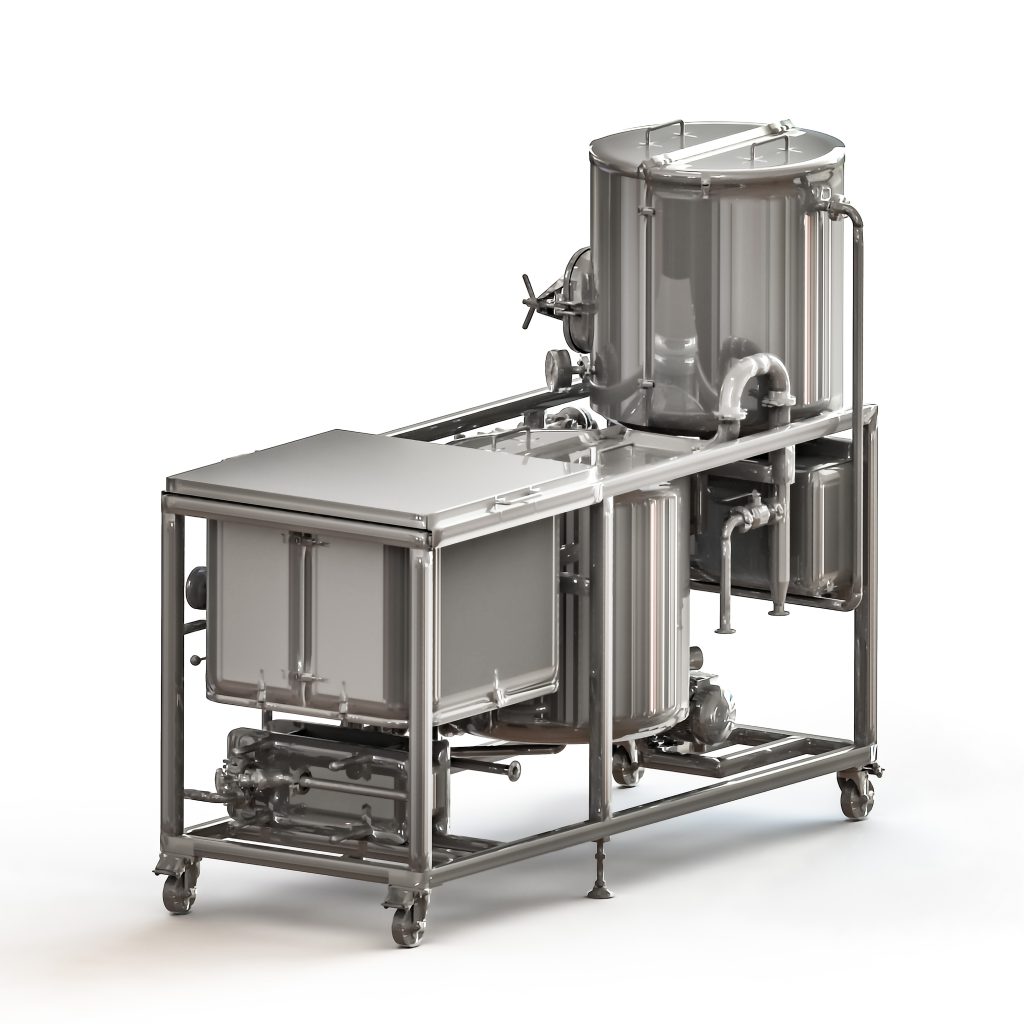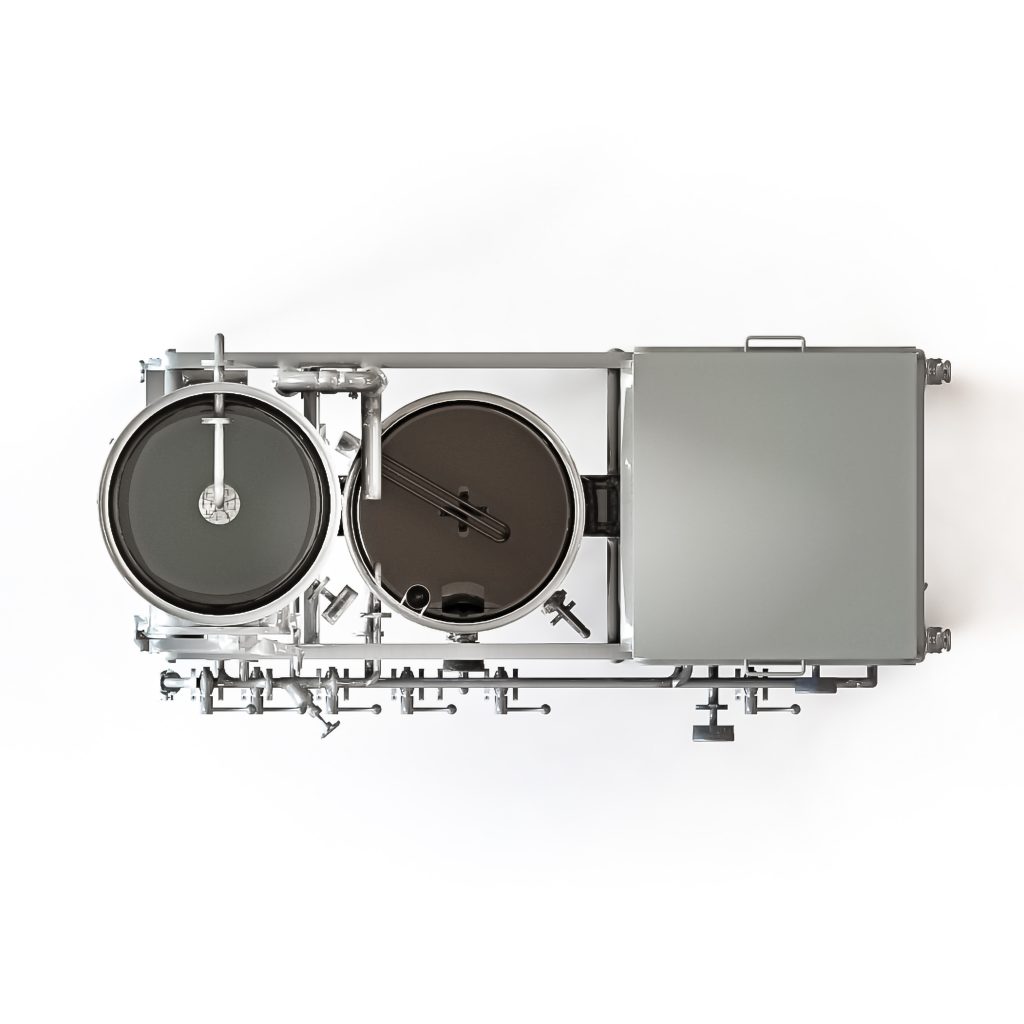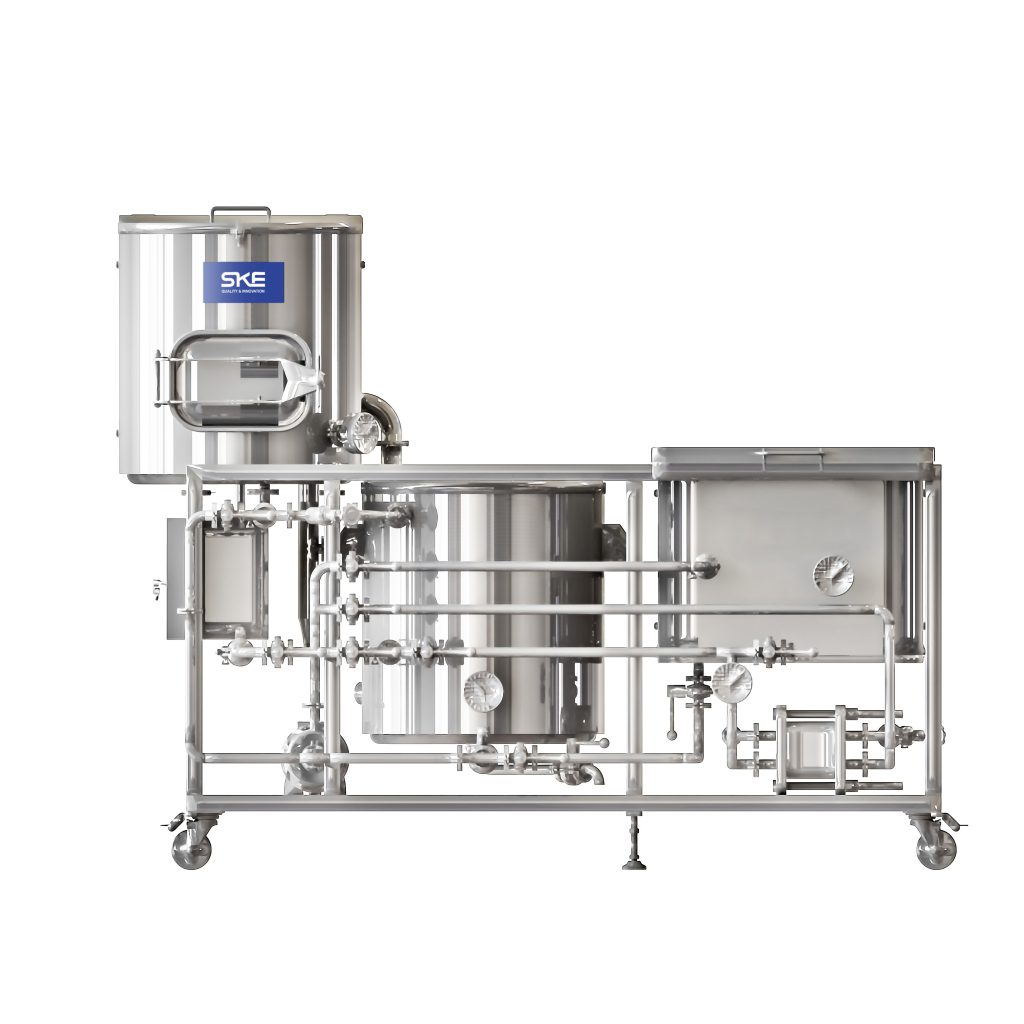Introduction

Le brassage maison est un passe-temps passionnant et enrichissant qui permet aux passionnés de créer des boissons personnalisées directement dans leur propre cuisine. Cependant, pour les débutants, la perspective de se lancer dans le brassage maison peut être intimidante. Le processus nécessite souvent une quantité importante d’équipement et de connaissances, du brassage et de l’ébullition à la fermentation et à la mise en bouteille. C’est là qu’interviennent les systèmes de brassage maison tout-en-un, une solution révolutionnaire conçue pour simplifier et rationaliser le processus de brassage maison. Ces systèmes intégrés combinent plusieurs fonctions en une seule unité, ce qui permet aux novices de se lancer plus facilement dans le brassage. Dans ce blog, nous explorerons les innombrables avantages de l’utilisation de systèmes de brassage maison tout-en-un, en soulignant comment ils peuvent transformer l’expérience de brassage pour les débutants.
What Are All-in-One Systèmes de brassage maison?
All-in-one home brewing systems are sophisticated devices that consolidate several key brewing functions into a single, compact unit. Traditionally, home brewing requires separate equipment for each stage of the process—such as mash tuns, boiling kettles, and fermenters. All-in-one systems integrate these components into one machine, capable of handling mashing, boiling, cooling, and sometimes even fermenting.
Principales caractéristiques
- Integrated Heating Elements: These systems often come with built-in heating elements that allow for precise temperature control throughout the brewing process.
- Digital Controls: Many models feature digital interfaces that enable users to set and monitor temperatures, timings, and other parameters with ease.
- Automatic Pumping Systems: Some systems include pumps that automatically move the wort between different stages, reducing manual handling.
- Conception compacte : The all-in-one nature means less counter space is required, making these systems ideal for small kitchens or brewing areas.
Benefits of All-in-One Systèmes de brassage maison
Facilité d'utilisation
Home brewing can initially seem complex, with various steps and equipment to manage. All-in-one systems simplify this by combining all necessary functions into a single unit. This integration allows beginners to focus more on the brewing process rather than on managing multiple pieces of equipment. The user-friendly interfaces on these systems are often intuitive, guiding users through each stage of the brewing process.
Example of Ease of Use
Consider a beginner who wants to brew a simple pale ale. With a traditional setup, they would need to measure and heat water, mash the grains, transfer the wort to a boiling kettle, and then cool it before transferring to a fermenter. In contrast, an all-in-one system allows them to set the parameters and let the machine handle the rest, from mashing to boiling to cooling.
Table : Comparison of Traditional Brewing Equipment vs. All-in-One Systems
| Fonctionnalité | Equipement traditionnel | All-in-One System |
|---|---|---|
| Complexité de l'équipement | Haut | Faible |
| Number of Components | Multiple | Single Unit |
| Setup Time | Long | Court |
| Cleaning Effort | Haut | Faible |
| Learning Curve | Steep | Gentle |
Consistency and Precision
Consistency is crucial for producing high-quality beer, and precision is key to achieving that consistency. All-in-one home brewing systems excel in this area by providing precise control over brewing parameters. The digital controls on these systems allow users to set exact temperatures and timing, ensuring that each batch is brewed under optimal conditions.
Contrôle de la température
Maintaining the correct temperature is essential for proper enzyme activity during mashing, which impacts the final flavor and body of the beer. All-in-one systems often feature programmable temperature settings that maintain accuracy, reducing the risk of temperature fluctuations that could affect the quality of the beer.
Table : Temperature Control Comparison
| System Type | Contrôle de la température | Précision |
|---|---|---|
| Equipement traditionnel | Manuel | Variable |
| All-in-One System | Digital/Automatic | Haut |
Efficacité spatiale
Traditional home brewing setups can be bulky and require significant space. This is particularly challenging for those with limited kitchen space or brewing areas. All-in-one systems are designed to be compact and space-efficient, consolidating various components into a single unit. This not only saves valuable counter space but also reduces the clutter typically associated with home brewing.
Space-Saving Design
For example, a typical home brewing setup might include a separate mash tun, kettle, and fermenter, each requiring its own space. An all-in-one system replaces these individual pieces with a single, compact device, making it easier to store and use in smaller spaces.
Table : Space Utilization
| Setup Type | Space Required | Clutter Level |
|---|---|---|
| Traditional Setup | Haut | Haut |
| All-in-One System | Faible | Faible |
Gain de temps
Efficiency is a significant advantage of all-in-one systems. Traditional home brewing often involves multiple stages and transfers, each of which takes time. All-in-one systems streamline this process by automating many of the steps. For instance, some systems feature built-in pumps that automatically move wort between stages, reducing the need for manual transfers and associated cleanup.
Example of Time Savings
A traditional brewing process might require several hours of active work plus additional time for setup and cleanup. In contrast, an all-in-one system reduces the amount of active work needed, as users can set the system to perform multiple tasks sequentially, such as heating, mashing, and boiling, with minimal intervention.
Table : Time Comparison
| Tâche | Traditional Setup | All-in-One System |
|---|---|---|
| Setup Time | Long | Court |
| Brewing Time | Variable | Cohérent |
| Cleanup Time | Extensif | Minimal |
Rapport coût-efficacité
While the initial investment in an all-in-one home brewing systems may be higher compared to purchasing separate equipment, the long-term cost benefits can be substantial. Investing in a single, integrated system can reduce the need for additional equipment and accessories, thereby saving money over time. Additionally, the efficiency of these systems often leads to better use of ingredients, further reducing costs.
Analyse de coût
Over time, the cumulative cost of purchasing and maintaining multiple pieces of traditional brewing equipment can add up. An all-in-one system, though potentially more expensive upfront, consolidates these costs and often comes with built-in features that optimize ingredient use and reduce waste.
Table : Cost Analysis
| Cost Factor | Traditional Setup | All-in-One System |
|---|---|---|
| Coût initial | Haut | Modéré |
| Equipment Costs | Multiple | Single Unit |
| Épargne à long terme | Faible | Haut |
Learning Curve
The learning curve associated with home brewing can be steep, particularly for beginners. All-in-one home brewing systems often come with detailed instructions, guided processes, and digital interfaces that make learning easier. These systems are designed to be intuitive, providing clear instructions and feedback throughout the brewing process.
Learning Support
Many all-in-one systems offer built-in tutorials or app integrations that guide users through each step of the brewing process. This support is invaluable for beginners who may not be familiar with the intricacies of brewing and can significantly shorten the learning curve.
Table : Learning Curve
| System Type | Learning Curve | Support Provided |
|---|---|---|
| Traditional Setup | Steep | Limité |
| All-in-One System | Gentle | Extensif |
Quality of Brew

One of the most compelling reasons to invest in an all-in-one home brewing systems is the quality of the final product. These systems are engineered to ensure consistent results, from precise temperature control to accurate timing. This level of precision contributes to better-tasting beer, with fewer inconsistencies and more reliable results.
Quality Factors
Key factors such as temperature stability, uniform heating, and proper fermentation control all contribute to the quality of the beer. An all-in-one system’s ability to regulate these factors precisely ensures that each batch meets high standards of flavor and consistency.
Table : Quality Factors
| Quality Aspect | Traditional Setup | All-in-One System |
|---|---|---|
| Contrôle de la température | Variable | Précis |
| Cohérence | Inconsistant | Fiable |
| Flavor Quality | Variable | Haut |
Conclusion
All-in-one systèmes de brassage maison represent a significant advancement in the world of home brewing, offering a range of benefits that are particularly advantageous for beginners. These systems simplify the brewing process, provide precise control, and enhance the overall quality of the beer. They are space-efficient, time-saving, and can be cost-effective in the long run. For anyone looking to start their brewing journey with minimal hassle and maximum support, investing in an all-in-one system is a decision that can greatly enhance the brewing experience.
FAQ
Q:What Should I Look for in an All-in-One Systèmes de brassage maison?
A:When choosing an all-in-one home brewing systems, consider factors such as capacity, ease of use, temperature control, and the range of features offered. Ensure that the system you choose fits your brewing needs and space requirements.
Q:Are All-in-One Home Brewing Systems Suitable for Advanced Brewers?
A:While all-in-one systems are designed with beginners in mind, they can also be used by advanced brewers who appreciate the convenience and efficiency they offer. Many systems have advanced features that cater to more experienced brewers.
Q:How Often Should I Clean My All-in-One Systèmes de brassage maison?
A:It is essential to clean your all-in-one system thoroughly after each use to ensure the longevity of the equipment and the quality of your brews. Follow the manufacturer’s cleaning instructions for best results.
Q:Can I Brew Different Types of Beer with an All-in-One System?
A:Yes, all-in-one home brewing systems are versatile and can be used to brew a variety of beer styles. Ensure that the system you choose has the capacity and features required for the types of beer you wish to brew.
Q:How Do I Maintain My All-in-One Systèmes de brassage maison?
A:Regular maintenance involves cleaning the system after each use and performing periodic checks on the components. Follow the manufacturer’s maintenance guidelines to keep your system in optimal condition.

